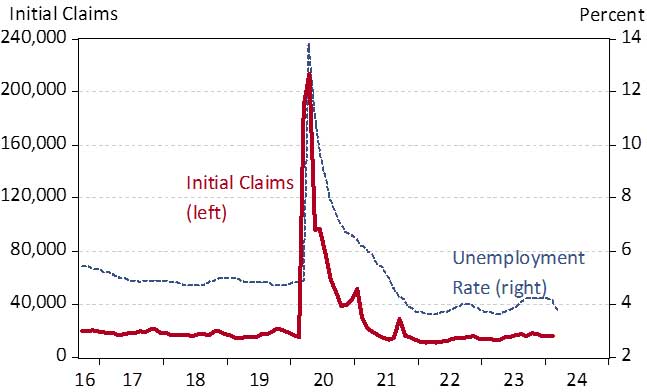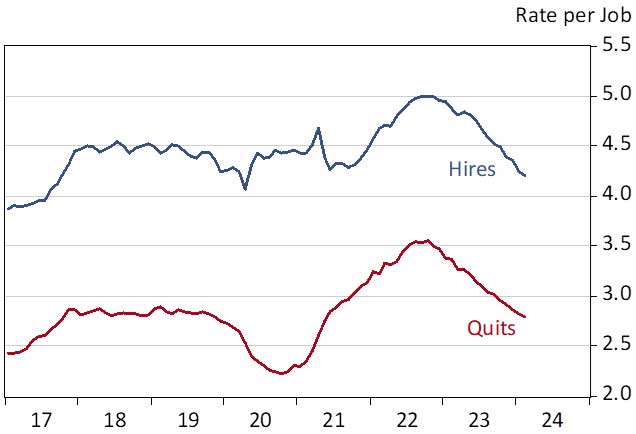George W. Hammond, EBRC director and Eller research professor
State jobs rose by nearly 70,000 over the year
Arizona added 8,700 jobs over the month in March on a seasonally-adjusted basis. February job gains were revised up from 2,200 to 5,500 in the latest release. Arizona’s seasonally adjusted unemployment rate dropped to 3.8% (from 4.1% in February), equaling the national rate of 3.8%.
Job gains in March were driven by professional and business services (up 2,600), private education and health services (2,500), trade, transportation, and utilities (up 2,400), government (up 1,500), and leisure and hospitality (up 1,300). Jobs were down in construction (down 800), financial activities (down 500), manufacturing (down 400), and information (down 200). Employment rose slightly in other services (up 200) and natural resources and mining (up 100).
Arizona added 69,500 jobs over the year in March, for 2.2% growth. That outpaced the U.S. at 1.9%. Exhibit 1 shows net job growth over the year for Arizona’s major industries. During the past 12 months, private education and health services added the most jobs, followed by trade, transportation, and utilities, government, and construction. Jobs were down over the year in leisure and hospitality, financial activities, information, and manufacturing.
Exhibit 1: Arizona Net Job Change (Thous.) and 2022 Annual Wages per Worker
The Phoenix MSA (Maricopa and Pinal counties) added 53,600 jobs during the past year, which translated into 2.2% growth. Jobs were up 1.1% over the year in the Tucson MSA, with an increase of 4,600. The Prescott MSA posted over the year growth of 1.9%, with 1,300 new jobs.
At 3.8% in March 2024, Arizona’s seasonally-adjusted unemployment rate hit its lowest level since June 2023 and remains consistently far below pre-pandemic levels (around 5.0%). Initial claims for unemployment insurance have trended up modestly during the past year, but remain relatively low as well (Exhibit 2).
Exhibit 2: Arizona Initial Claims for Unemployment Insurance and the Unemployment Rate, Seasonally Adjusted
Arizona’s seasonally-adjusted unemployment shows that the state labor market remains tight. However, data from the Job Openings and Labor Market Turnover Survey (JOLTS) suggests that the labor market has normalized somewhat. Exhibit 3 shows smoothed hire and quit rates for Arizona, reflecting the latest data (through February 2024). Both hire and quit rates skyrocketed as the economy recovered from the pandemic shock. This is one way to see the huge surge in labor market churn, as workers quit jobs and were hired into new jobs. After peaking in 2022, labor market churn has normalized, with both smoothed quit and hire rates returning to pre-pandemic levels.
Exhibit 3: Arizona Quit and Hire Rates, Seasonally-Adjusted, 12-Month Moving Average, Percent







